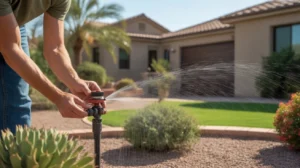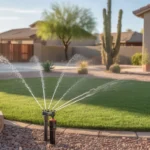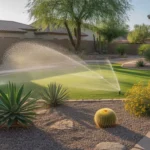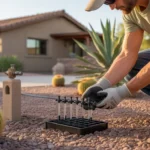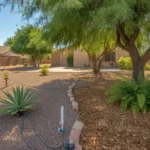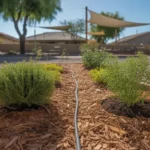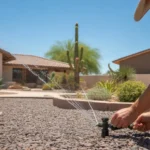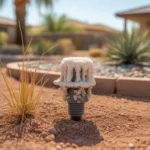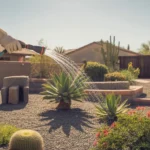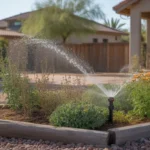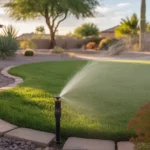Keeping your Southeast Valley yard lush and thriving requires a delicate balance of hydration, especially during our long, hot summers. One of the smartest upgrades you can make is installing high-efficiency sprinkler heads throughout your irrigation zones. These advanced nozzles deliver water with precision, minimizing waste and ensuring your plants get the moisture they need to flourish in our arid climate. Let’s explore how to select and fine-tune these water-wise wonders for your desert landscape.
Understanding High-Efficiency Sprinkler Head Technology
Traditional sprinkler heads often overspray, leading to excessive evaporation, runoff, and uneven coverage. High-efficiency models, on the other hand, are engineered to deliver water exactly where it’s needed. They typically feature multi-stream, rotating nozzles that emit larger droplets at a slower rate. This allows water to penetrate the soil more effectively, reducing loss to wind and heat.
Popular options for Southeast Valley landscapes include the Hunter MP Rotator and Rain Bird R-VAN series. These heads are designed to match precipitation rates across zones, eliminate dry spots, and provide superior close-in watering. By upgrading to these smart nozzles, you can reduce water usage by up to 30% while maintaining a vibrant, well-hydrated yard.
When selecting high-efficiency heads, consider your specific plant and soil types. For turf areas, look for models with adjustable arc and radius settings to ensure precise coverage. In shrub and groundcover beds, opt for pressure-compensating heads that maintain a consistent flow rate across the zone. This prevents overwatering in some areas and underwatering in others.
Proper Sprinkler Head Placement and Spacing
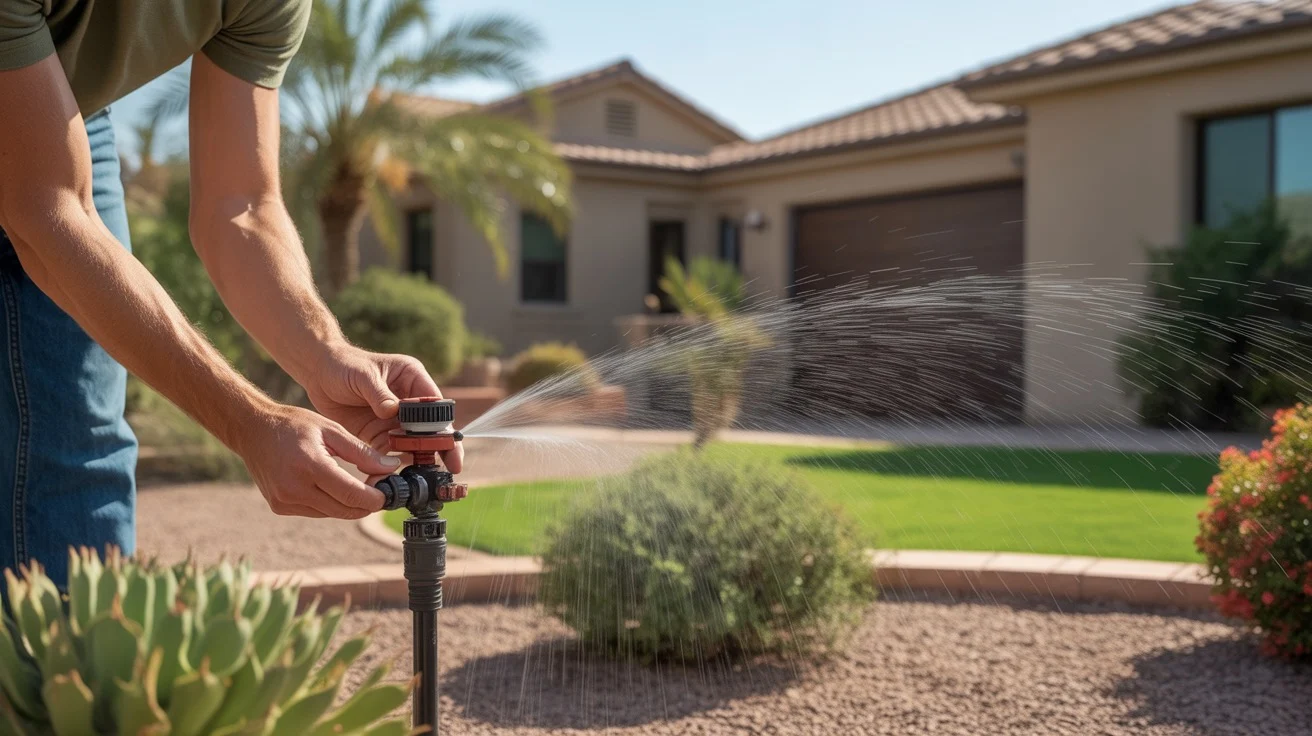
Even the most advanced sprinkler heads won’t perform optimally if they’re not positioned correctly. Proper head-to-head spacing is crucial for uniform coverage and minimizing dry spots. As a general rule, each head’s throw distance should reach the adjacent heads in the zone.
In the Southeast Valley, this typically means spacing heads about 15-20 feet apart for turf areas and 12-15 feet apart for shrub beds. Keep in mind that factors like wind, slope, and plant density can affect coverage. It’s always best to consult with a local irrigation specialist to determine the ideal layout for your specific yard.
When installing heads, make sure they’re positioned at the correct height relative to the surrounding grade. Heads should be flush with the soil surface to avoid obstructions and ensure proper spray patterns. In turf areas, consider using swing joints to prevent damage from mowers and foot traffic.
Adjusting Sprinkler Heads for Optimal Coverage
Once your high-efficiency heads are in place, take the time to fine-tune their settings for peak performance. Most models allow you to adjust the arc (spray width) and radius (throw distance) to match your yard’s unique contours and planting areas.
Start by running each zone individually and observing the spray patterns. Look for areas of overspray onto hardscapes or neighboring properties, as well as dry spots where coverage falls short. Use the adjustment screws on each head to dial in the arc and radius until you achieve even, head-to-head coverage.
Keep an eye out for obstacles like mature trees, walls, or large boulders that could block spray patterns. You may need to add additional heads or adjust nozzle trajectories to ensure water reaches all corners of the zone. For tricky areas, consider using specialized nozzles like side strips or end strips to provide targeted coverage without waste.
Seasonal Adjustments for Southeast Valley Irrigation
As our desert seasons change, so do the watering needs of your landscape. High-efficiency sprinkler heads make it easy to adjust your irrigation cycles to match the weather and plant requirements.
During the peak of summer, your yard will likely need more frequent, deeper watering to combat intense heat and rapid evaporation. Increase your sprinkler run times to ensure moisture penetrates the root zone, but be careful not to overwater. Aim for about 1 inch of water per week, split into 2-3 cycles to minimize runoff.
As temperatures cool in fall and winter, dial back your watering frequency to avoid saturating the soil. Most desert-adapted plants need minimal irrigation during the cooler months, so you may only need to run your sprinklers once every 2-3 weeks. Use a soil moisture sensor or probe to gauge when your yard truly needs a drink.
Maintenance Tips for High-Efficiency Sprinkler Heads
To keep your high-efficiency heads performing at their best, give them regular TLC. Inspect nozzles frequently for clogs, damage, or improper alignment. Clean out any debris, and make sure the heads are still level with the soil surface.
Check for leaks or geysers, which could indicate a broken seal or cracked casing. Replace faulty heads promptly to avoid wasting water and creating soggy patches in your yard. If you notice reduced flow or uneven coverage, the nozzle’s internal filter may need cleaning.
At least once a year, conduct a thorough audit of your entire irrigation system. Run each zone and look for signs of wear, overspray, or poor performance. Make repairs and adjustments as needed to keep your yard hydrated and healthy season after season.
By upgrading to high-efficiency sprinkler heads and following these best practices, you’ll be well on your way to maintaining a lush, water-smart landscape in the Southeast Valley. Your plants will thank you, and you’ll enjoy the satisfaction of being a responsible steward of our precious desert resources.

